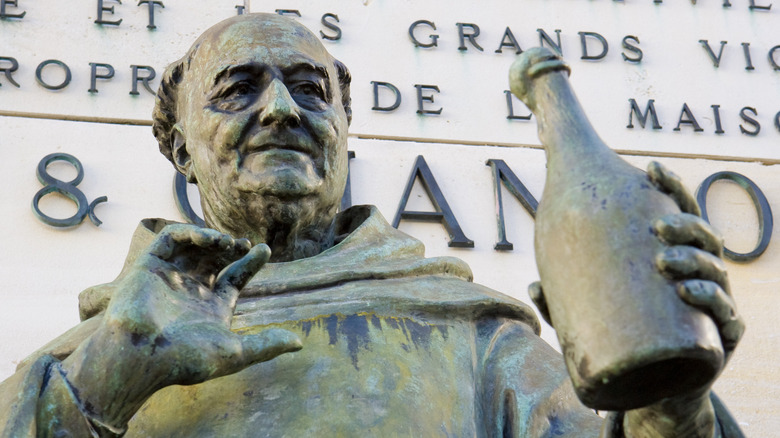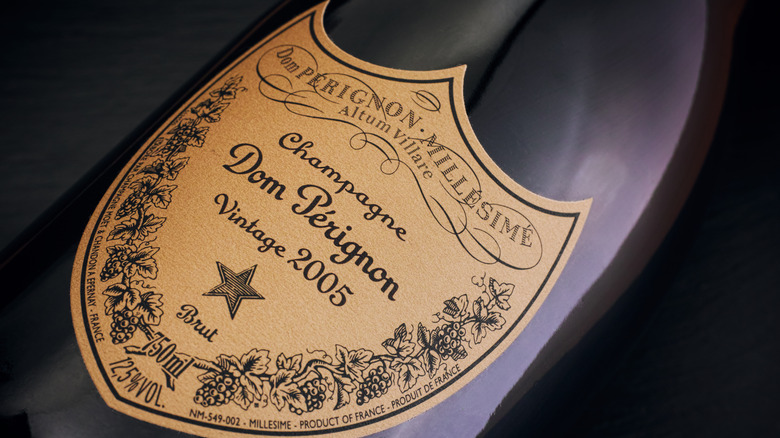How A Benedictine Make Changed Wine Forever
Dom Pérignon may be closely associated with luxury or hip-hop lyrics these days, but back in the good ol' days (as in the 1600s), Dom Pierre Pérignon was quite the opposite. According to the National Catholic Register, he was not only a Benedictine monk, devoting himself to the bare-bones spirit of the friars, but his specific job was that of a cellarer. If his name bears any relation to the upscale beverage it does today, it actually came about through his making of what was then thought of as low-end white wines.
Pérignon entered an abbey in the Champagne region of France in his early thirties. On top of having a knack for mixing different grape varieties to produce various types of wine, amongst other things, perhaps Pérignon's crowning achievement was having developed the pinot noir grape. It was far more resistant to the area's climate, thus making it easier to produce wine.
"Come quickly, I am drinking the stars"
While Dom Pérignon didn't invent what we know as champagne himself, we would have never gotten close to sipping Moët in the back of the club without him. As relayed by Wine Maker, Frère Pérignon's use and development of pinot noir grapes was a watershed moment in the production of white wine, and most of all sparkling wine. At the time, bubbles in wine were not only frowned upon but actually considered dangerous due to how common it was for bottles to explode. However, Pérignon wasn't your average winemaker.
Dom Pérignon not only innovated the use of red grapes (pinot noir) in white wine, but when he found those bubbles in his bubbly, he realized he'd stumbled into something so unique and perfect that he to famously called to his fellow monks to, "Come quickly, I am drinking the stars." Had it been anyone else, they may have thought he'd just been drinking, period. However, considering how unique his wine was at the time, Pérignon decided to work around the exploding bottles by using thicker glass and something of a predecessor to the wire closures we have on top of corks today to continue producing "stars."

